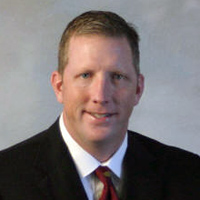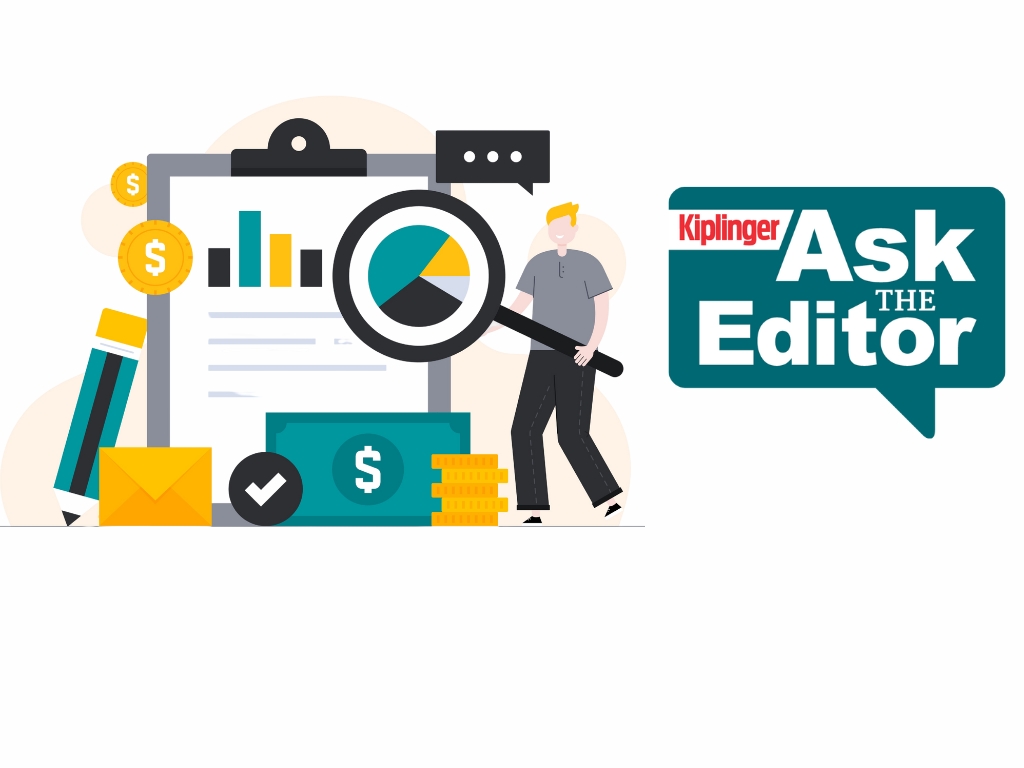Uncovering the Real Costs in Your Mutual Fund
Hidden costs could be holding back the returns on your investment portfolio. Here are three places investors should take a closer look at when evaluating mutual funds.

Most people invest in mutual funds because they're easy.
The fund manager does the research for you, so you don't have to spend a lot of time choosing investments or monitoring the fund yourself. You have the comfort of knowing someone else is worrying about diversification and the ups and downs of the market—usually for an affordable initial investment.
But, as with any business, running a mutual fund involves costs that are passed down to investors. Some are obvious; some are not. But you should understand them all because a fund with high costs has to perform better than a low-cost fund to generate the same returns.
From just $107.88 $24.99 for Kiplinger Personal Finance
Become a smarter, better informed investor. Subscribe from just $107.88 $24.99, plus get up to 4 Special Issues

Sign up for Kiplinger’s Free Newsletters
Profit and prosper with the best of expert advice on investing, taxes, retirement, personal finance and more - straight to your e-mail.
Profit and prosper with the best of expert advice - straight to your e-mail.
Sometimes it takes awhile for investors to realize the bite those fees and expenses are taking from their bottom line. Maybe a fund isn't performing as expected, and they just can't figure out why. When we sit down and take a look at what's going on, we usually can pinpoint the problems pretty quickly. And frequently it's one of three issues:
1. It's a proprietary fund, or there's some kind of incentive for the financial professional to sell it. Mutual fund companies often try to incentivize brokerage firms to sell their products by offering revenue-sharing agreements. If your financial professional is pitching a fund that has the name of his brokerage house or bank on it—or if it's a brand-name fund—there may be a higher commission involved. And that cost could be passed down to you, the investor, through fees. It also could mean you aren't necessarily getting a fund that was chosen with your best interests in mind.
As regulators continue to address this issue, disclosure statements should improve, but for now it's wise to ask your financial professional why he chose a particular fund and if a commission was involved. Or you may wish to take your portfolio to an independent fiduciary to be analyzed.
2. The fund has a high turnover ratio. A fund's turnover ratio represents the percentage of holdings that have changed over the past year, and it can give you an idea of how long a manager holds on to a stock. A low turnover ratio (20%) indicates a buy-and-hold strategy. A high turnover ratio (more than 100%) indicates a strategy that employs active buying and selling of securities. Each of those transactions has a cost, which will be passed on to the investor—and the more transactions there are, the more the costs build. There are also tax consequences for dividend income or capital gains. You likely won't find those costs in bold print in your paperwork, but an adviser can do the calculations and help you decide if you’re getting what you're paying for.
3. The fund is highly volatile. How fast and how far the value of a fund rises and falls can be a good indicator of the potential risk. When everything else is equal, a highly volatile fund has more risk than one with low volatility. It may get you a higher return, but that's likely because it's taking more risk than makes sense for your overall plan and goals. When you're retired and depending on your investments for income, for example, a sudden market downturn could be devastating if you have to sell at a loss. Your adviser can use the Sharpe ratio, developed by Nobel Memorial Prize-winning economist William Sharpe, to compare the return of a mutual fund with its volatility, and determine how it could impact your retirement. Getting an overall risk assessment is one of the most important things you can do to protect your portfolio.
Mutual funds are easy. But you're doing your future self a disservice if you aren't paying attention to what's happening to that investment or what it's costing you in the long-term. Take a look at your portfolio and ask yourself:
- Am I in a fund that's doing revenue-sharing? And, if so, am I sure it's the best fund for me?
- Is there a lot of trading going on? And am I seeing a better return because of that?
- What kinds of risks are this fund's manager or managers willing to take? And is that a fit for my timeline and personal risk tolerance?
All of these factors can be measured, and if there are problems, there are also solutions that can help lead you to a more abundant retirement.
Profit and prosper with the best of Kiplinger's advice on investing, taxes, retirement, personal finance and much more. Delivered daily. Enter your email in the box and click Sign Me Up.

Don Ross, founder and president at Ross Wealth Advisors, has more than 25 years' experience in the insurance and financial services industry. He has passed the Series 7 securities exam and holds a life insurance license in Ohio. Retired from the military after more than 20 years of service as a pilot in the Ohio National Guard, Ross lives in Upper Arlington, Ohio, and enjoys traveling, yard work and cycling. He and his wife, Joni, have three children: Judith, Ryan and Lance.
-
 Ask the Editor: How to Get Ready for Tax Filing Season
Ask the Editor: How to Get Ready for Tax Filing SeasonAsk the Editor In this week's Ask the Editor Q&A, Joy Taylor answers questions on the IRS tax filing season and your 2025 tax return
-
 4 Simple 2026 Money Targets to Aim For (And How to Hit Them)
4 Simple 2026 Money Targets to Aim For (And How to Hit Them)While January is the perfect time to strengthen your financial well-being, you're more likely to succeed if you set realistic goals and work with a partner.
-
 Everyone Needs an Estate Plan (Seriously, Even You)
Everyone Needs an Estate Plan (Seriously, Even You)If you've acquired assets over time, even just a home and some savings, you have an estate. That means you need a plan for that estate for your beneficiaries.
-
 4 Simple Money Targets to Aim for in 2026 (And How to Hit Them), From a Financial Planner
4 Simple Money Targets to Aim for in 2026 (And How to Hit Them), From a Financial PlannerWhile January is the perfect time to strengthen your financial well-being, you're more likely to succeed if you set realistic goals and work with a partner.
-
 I'm a Wealth Adviser: Everyone Needs an Estate Plan (Seriously, Even You)
I'm a Wealth Adviser: Everyone Needs an Estate Plan (Seriously, Even You)If you've acquired assets over time, even just a home and some savings, you have an estate. That means you need a plan for that estate for your beneficiaries.
-
 How to Be a Smart Insurance Shopper: The Price Might Be Right, But the Coverage Might Not Be
How to Be a Smart Insurance Shopper: The Price Might Be Right, But the Coverage Might Not BeChoosing the cheapest policy could cost you when you have a loss. You'll get the best results if you focus on the right coverage with the help of a good agent.
-
 7 Reasons Why Your Portfolio Needs Short-Term Bond ETFs
7 Reasons Why Your Portfolio Needs Short-Term Bond ETFsMoney market funds are a safe option for your cash, but ultra-short and short-term bond ETFs also deserve consideration. Here are seven reasons why.
-
 I'm a Wealth Planner: Forget 2026 Market Forecasts and Focus on These 3 Goals for Financial Success
I'm a Wealth Planner: Forget 2026 Market Forecasts and Focus on These 3 Goals for Financial SuccessWe know the economy is unpredictable and markets will do what they do, no matter who predicts what. Here's how to focus on what you can control.
-
 I'm a Financial Adviser: Why In-Person Financial Guidance Remains the Gold Standard
I'm a Financial Adviser: Why In-Person Financial Guidance Remains the Gold StandardFace-to-face conversations between advisers and clients provide the human touch that encourages accountability and a real connection.
-
 This Is How You Can Turn Your Home Equity Into a Retirement Buffer
This Is How You Can Turn Your Home Equity Into a Retirement BufferIf you're one of the many homeowners who has the bulk of your net worth tied up in your home equity, you might consider using that equity as a planning tool.
-
 Feeling Too Guilty to Spend in Retirement? You Really Need to Get Over That
Feeling Too Guilty to Spend in Retirement? You Really Need to Get Over ThatAre you living below your means in retirement because you fear not having enough to leave to your kids? Here's how to get over that.